The Self-Conserving Native Landscape
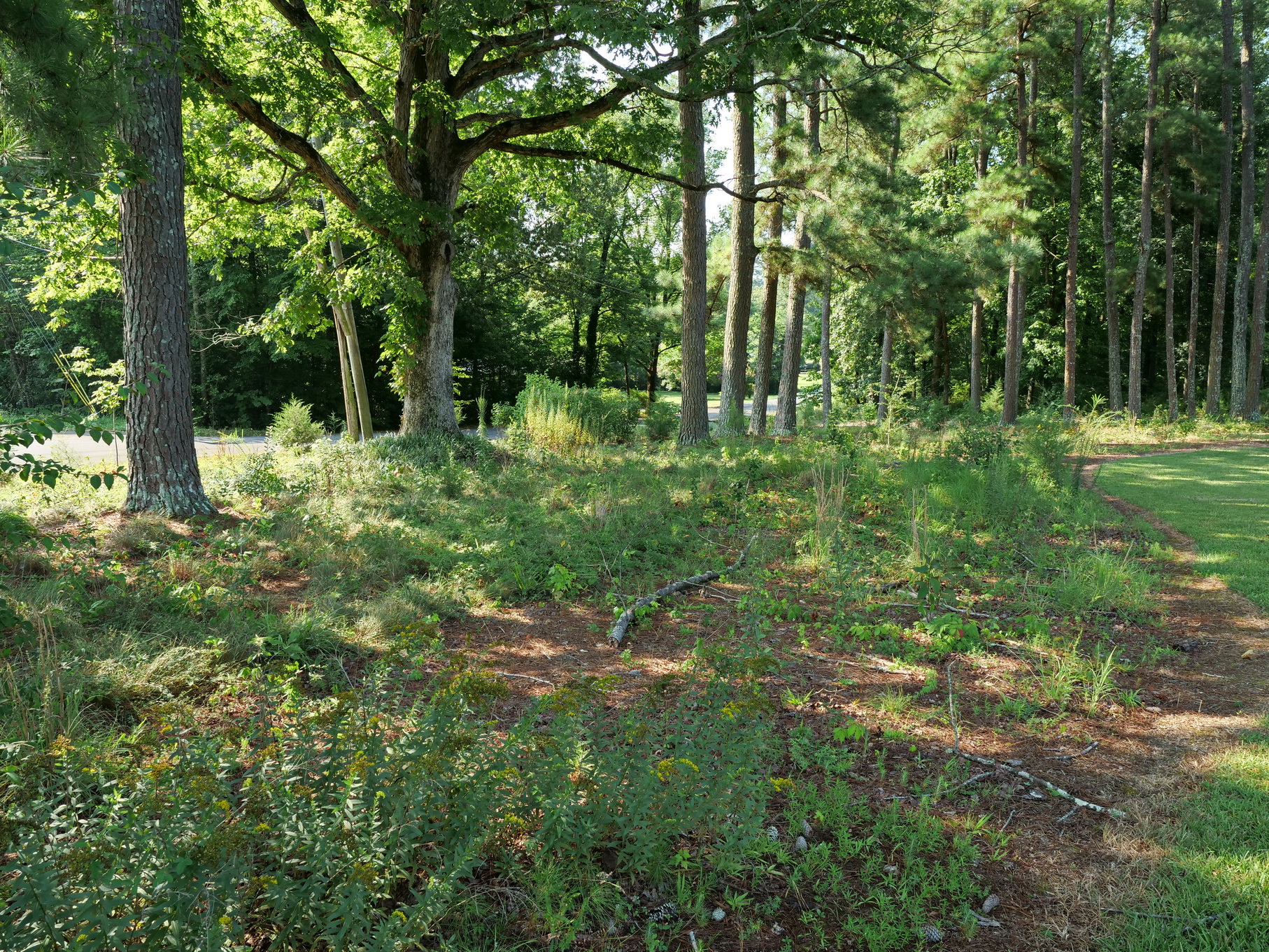
In the beginning, the gardening I practiced was largely, often completely, a foisting of my human will on the land. It rarely allowed, it routinely imposed. I continued that practice for many years, then I brought its habits to Chattanooga Valley when I settled here in 2015. At that time, I was dreaming of a native garden that would one day sustain itself with little human effort, little real gardening. Naïveté allowed me to believe that building this self-conserving landscape would be a simple matter of mustering the will, gathering the proper resources, and planting the garden. So, I mustered and I gathered, then I stood alone, face-to-face, looking in awe at the swaths of invasive plants that had entangled the property over the previous seven decades. Seeing the land from that perspective was both an awakening and a reckoning; the self-conserving native garden suddenly seemed more an elusive fantasy than a real possibility. It caused me to flinch, but over time I was able to see through and beyond the invasive plants. My ideals steadied; I moved onward. I knew that I was not the only one who yearned for a self-conserving garden. What I did not grasp was that such a place, having little need for gardening, would have little need for a gardener. For many, I daresay, it would not be a garden at all.
The gardener’s perception is the key in this scenario. If the self-conserving native garden is perceived as a human ideal to strive for, then, once the ideal is reached, the fantasy ends, as does the need for a gardener. When the gardener disappears, only the self-conserving landscape continues, and continue it does. That’s because it is the nature of Nature to self-conserve. Every seed Nature sows is an act of self-conservation. Nature continuously draws from itself to restore itself. Like it or not, crabgrass, chickweed and narrow-leaf plantain, plants most of us see as weedy adversaries in the garden, emerge in the landscape from Nature’s storehouse, from Nature’s self to restore Nature’s self. Yes, every garden and every garden plant, native or not, is self-conserving when the native ideal is removed from thought; and conversely, no landscape can be truly self-conserving as long as a gardener tends it. Through that understanding, I could see that the gardening I knew and loved – the gardening I practiced until the later stages of my career – had little room, little respect, for Nature. It was steeped in self-serving arrogance toward our native land, born of an idealism that divided me from the very real place I was purporting to steward.
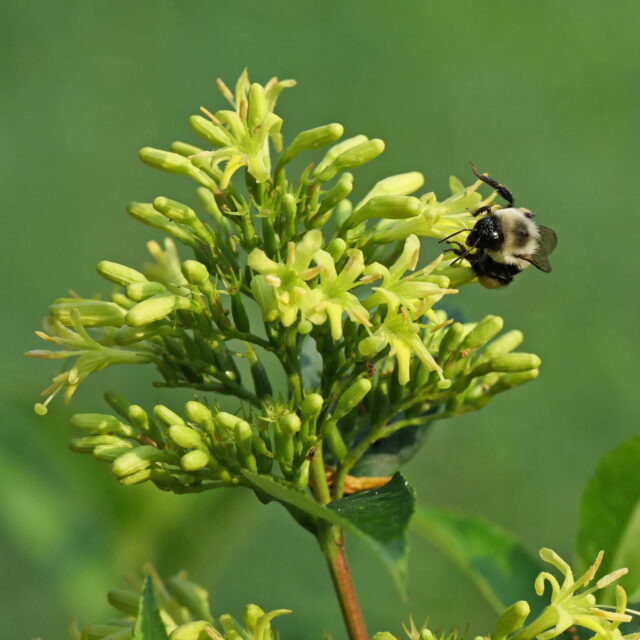
Isn’t it beguiling, the way the spirals of life circle back around to themselves? Each time the circle comes around we are always older, and always meeting an opportunity to be wiser, to see life anew. Perhaps that’s because age gives spirals their third dimension: With each circling of life, we pass earlier moments in time, but because the spiral is rising, it changes the angle of our view. Past events may now appear different, and may be at odds with our present time. Not long ago, when my circle came around, I saw that my original concept of the self-conserving native landscape was based on viewing Nature as a disparate entity, unconnected to myself. There was me, right here, but Nature was… over there. Maybe, on some particularly cohesive days, when all of life seemed to be gathered into one, I saw the garden as somewhere between Here and There. Mostly, though, I have perceived my garden as an extension of my house and of me, disembodied from the natural world. When I went hiking, for instance, I thought I was leaving my home-and-garden behind to go spend some time in a separate, unconnected place – in Nature. Sometimes, I still think like that, but is this the way it really is, or have I been deceiving myself? These days, I’m not so sure what place “over there” refers to. With each round of the spiral, with each evolution in my point of view, more of life hints that Nature is right here, right now, with each new appearance portending a connection of all living things. If this is true, where, I wonder, is the mysterious place, the liminal space, where Here ends and There begins?
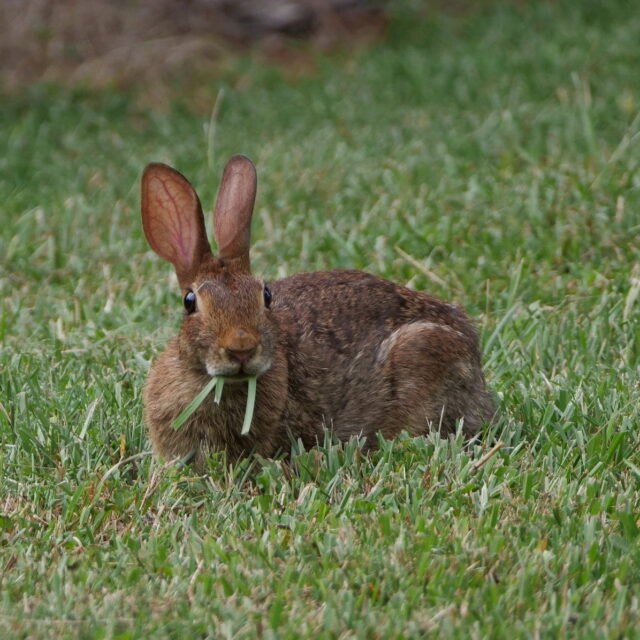
In his book Come of Age, Stephen Jenkinson recalls an enlightening encounter he had with a native Hawaiian woman at a teaching session in Maui. She had come “…to sing, to call in her ancestors and ours to learn and accompany and bless the proceedings….” At the end of the day in a behind-the-scenes moment, she explained the song to him:
You know, we have this word, this name for white peoples: Haole.
But it doesn’t really mean “white person” at all. There’s no mention
in it of color or of race. The root word is our word for “breath,” or
for “spirit,” or for “life.” Our way of greeting is to touch at the forehead
and the nose and let our breath mingle. When the whites started
coming, they wanted to shake hands, which to us meant keeping their
breath separate from ours, and their spirit and their life separate from
ours. It turned out that that was what they wanted. That hasn’t changed
much, not really. So Haole really means something like, “keeps his breath
and his spirit to himself.”
Her native Hawaiian people intently breathed one another to take one another in. Through the breath, others became part of oneself, and thereby one came to know the other. When I read this several years ago, my first thought was, I have unintentionally become – or perhaps have always been – quite the Haole. Whether that’s true or not, it’s now several spirals later, and with the passings I see another certainty: We unwittingly breathe in minute particles of everything that surrounds us. If we are surrounded with plants and animals, that is what we will breathe in, that is what we will know, that is what we will become. And as we breathe out, our breath becomes part of our environs, and those environs, including all the plants and animals in our midst, take us in, they come to know us. Were we to acknowledge this, it might become clear that the idea and the ideals that separate us from Nature can only be true to the extent that we isolate ourselves from Nature, and we are rarely, if ever, entirely isolated. How can we be separate from that which we breathe in? To breathe is to be alive, to be part of Nature. Nature comes in through our lungs, migrates into our blood and travels throughout our bodies. Nature is our being. As Nature surrounds us, as we open ourselves to the ways of Nature, as we breathe in the native landscape, we are gathered in. And the way of that gathering is self-conservation. Nature is always and at every moment self-conserving. A welcome change for us would be to bow, take a few deep breaths to draw in Nature, then emphatically breathe out the native gardening ideals that have enthralled us. It might lead us to garden less and conserve more, reciprocally, with Nature, both native and not.
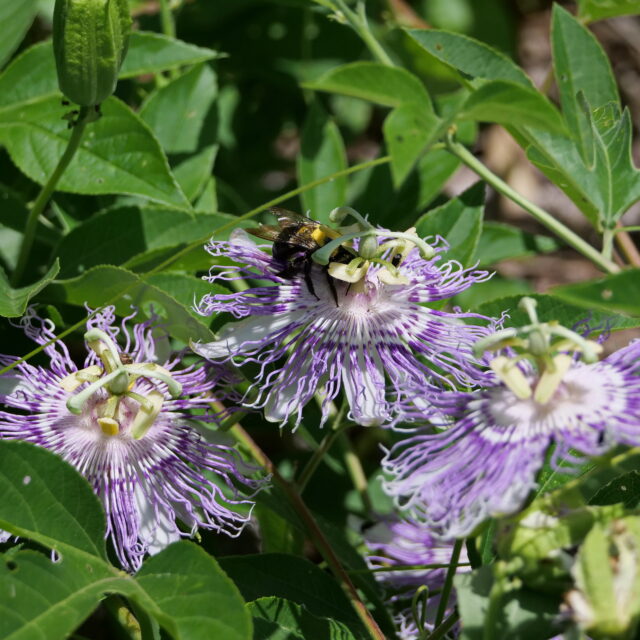
In fact, we must do this. The native garden ideal in which a gardener views himself or herself as separate from Nature is not sustainable. It leads inevitably to a clash, a head-on encounter, when gardeners, trying to force their will on the land, come face-to-face with Nature’s will. Nature’s plants, all of them, are hard-wired to self-conserve. Plants long to belong, to restore themselves, invariably, relentlessly. Their restoration is not guided by ideals, but by the ancestral memory stored in the mother plants of each species, and it is seeds that carry their longing from one generation to the next. Plants do not do otherwise.
If we would only accept this fact, if we would garden with intention, recognize that there is no ideal garden, and allow Nature to unfold in our midst, then a new relationship may develop from which beautiful natural landscapes emerge. It’s the union of two heretofore disparate wills: Plants will themselves to the land from Nature‘s storehouse, while through our will (and exertions) pernicious weeds and invasive plants can be removed, allowing more beneficial plants to establish themselves. We can provide further benefit by supplementing the enduring landscape with more native plants, allowing Nature to try and true each one. It’s two hands working together, reciprocally. Nature‘s decisions may not always be to our liking, but they will be true to Nature. That’s the way relationships work. There is no ideal, no have-it-all; there is, instead, a melding of wills that engenders the relationship and ensures its continuance.

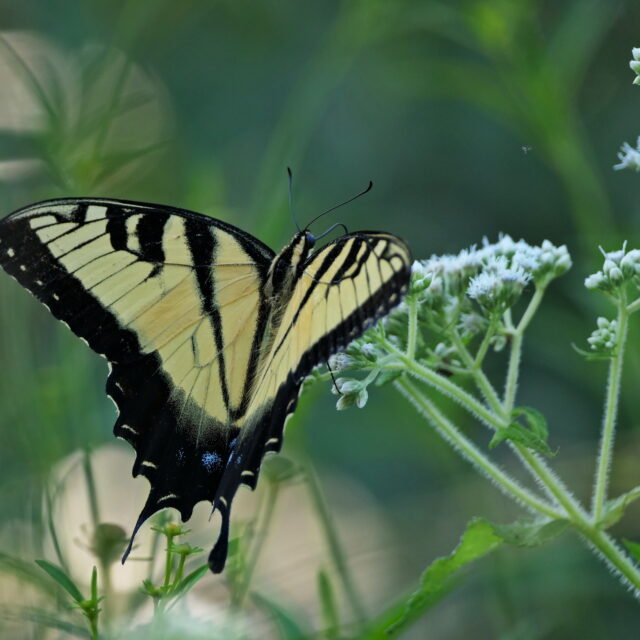
At home in Chattanooga Valley, the foisting of my all-too-human will on Nature continues. Spring planting season has long passed, and the summer has brought more than enough rain for most plants, so my gardening work is down to a few simple chores: mowing, weeding and pruning. It’s all restraining Nature, but there is more to my story. The story also includes an evolution in my relationship with this land. I am now merging my will – the will that imposes – with the will of Nature. I am controlling less, allowing more. Some examples of that allowing:
- Two red mulberries appeared on the property this year, not in ideal places, not even in good places. Rather than remove them, I transplanted them to locations where they might flourish. They are now rooting in the land, and will soon provide cover and fruits for wildlife.
- Culling two severely diseased eastern red cedars from the west boundary left a gaping whole in the tree-and-shrub border. Around the same time, a willow tree sprouted about 10 feet from the north side of the house – not a good place for the willow – so I transplanted it to the hole that the removal of the diseased cedars had left. Nature tried and trued those cedars – they were not suited to the spot, but the willow should thrive in its moist soil.
- Four years ago, I planted American beautyberry at the edge of pines on the south side of the property, but they never grew well there. The shrubs were soon spindly, the foliage sparse. Still, they were healthy enough to produce seeds. Two years later, seedlings of beautyberry sprouted up several hundred feet away at the northeast corner of the property where they are growing robustly on the edge of the front meadow. This spring, another colony emerged under the canopy of the persimmon copse.
- The whorled milkweed I planted in the front meadow flourished early on, but aphids soon besieged it; two years after planting, the 30+ original plants fizzled to a few meager shoots. In the meantime, the truly wild, wild bergamot that seemed destined to overrun the entire meadow has begun to settle in among a cohort of other plants, vigorous along with, while not overwhelming, them.
- Native violets and broadleaf plantain, plants I long considered weeds in the manicured landscape, are now large-scale ground covers. Nature provided them and I acquiesced to their longing to belong. They are thriving right out back, enmeshed in the ground layer of the landscape. Now I breathe them in every time I sit on the rear deck.
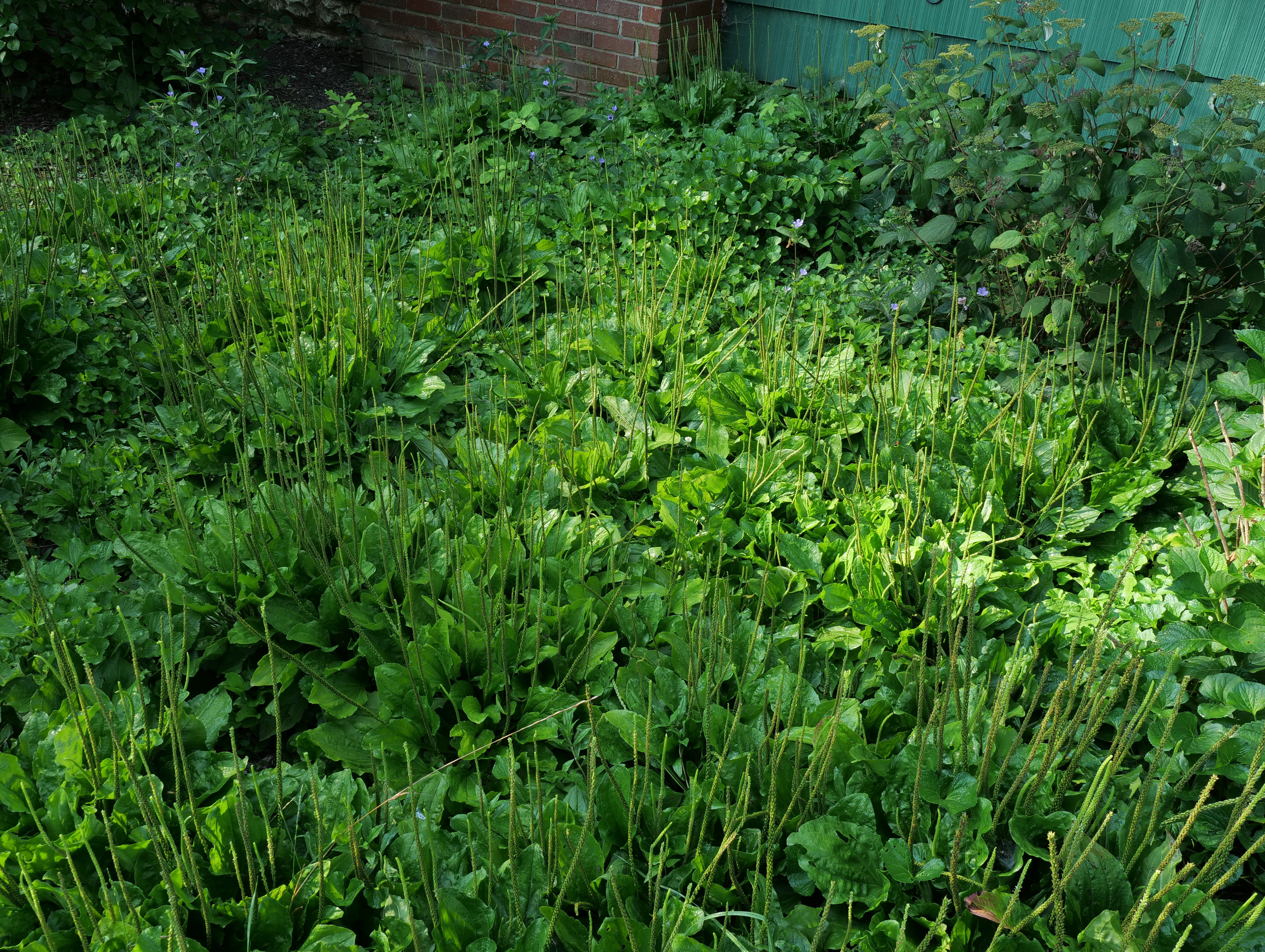
We provide and Nature decides. Nature provides and we decide. It’s a partnership, not an ideal, evolving as it spirals through time and place.
Today, this land in Chattanooga Valley is biologically a much richer place than when I settled here six years ago. That’s in part because I planted a lot of native plants in the early years, but more recently it’s because I’m letting Nature happen; I’m imposing less, allowing more. It enriches me with every breath I take. Those riches are moving through me, dispelling my native gardening ideals while instilling in me knowledge of a way to reappear in the garden, not as a gardener, but as a part of Nature’s matrix, as a novice conservator of this land that is my home. Truly, as I gather, I am gathered, into the ways of the self-conserving native landscape.
Many thanks, as always, to Emily Campbell for applying her superb editing skills to all the particulars of this post. Thank you, Emily!